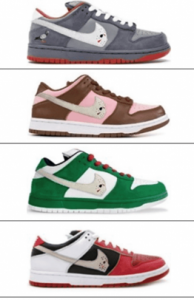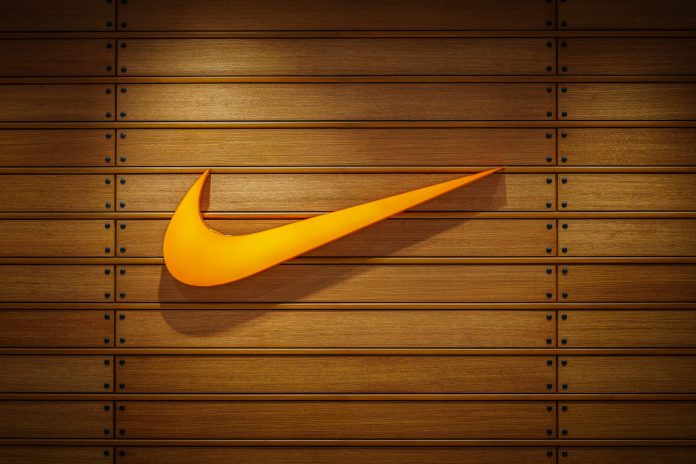This article is written by Eriobu-Aniede Onyekachi, pursuing Diploma in US Intellectual Property Law and Paralegal Studies from Lawsikho.
Table of Contents
Introduction
Breaking into new market frontiers is not an easy feat. It takes a calculated effort, diligence, compliance, consultations and risk assessment to launch successfully into a new market. Expanding from a fashion brand to a lifestyle and athletic brand has some intellectual property (IP) implications for Nike Inc. Nike’s dominance in the world of sports and its ability to launch into new markets thrive on its ability to protect and project its brand’s logo, image, and visibility, through intellectual property protection, staff commitment, confidentiality, IP due diligence, and extensive research, endorsement, advertisement and collaboration with consumers and partners. Nothing stands out as much as the identity that Nike has created for itself across the globe that has left a lasting impression in the minds of consumers. Indeed, every organization must strive to create an identity of its own in the market for consumers’ patronage and collaborations because branding is what creates and defines a company’s identity. Branding brings about goodwill, value, visibility and partnerships, and contributes towards making the product the consumer’s ‘first choice’. This article seeks to explore the challenges encountered by Nike in keeping their IP protected while staying as a ‘first-choice’ brand.
The challenges of being a popular brand : Nike
Being a popular household and a global brand has its pros and cons. Big brands like Nike have remained successful despite expansions due to their most valuable asset, intellectual property. They safeguard their assets both internally and externally through confidentiality and IP tools that prevent third-party reach. IP gives them a higher bargaining power when collaborating, and builds a defence wall from infiltration and dilution.
Intellectual property is territorial and thus arises the need for protection of intellectual Property Rights in multiple jurisdictions which has traditionally not been time and cost-effective. This disadvantage has been mitigated by WIPO through treaties on IP that binds member states that are signatory to these treaties in such a way that through one single system such as the Madrid Protocol, a mark is registered across any designated state of choice.
Apart from registering marks in various regions, big brands always have to police their brands, fishing out infringers, seeking collaboration from infringing acts (partnership, distributorship, license agreements, etc), suing for infringement, and also by preventing leaks of confidential information and trade secrets from their establishments by ensuring the inclusion of a strict confidentiality clause in all contracts.
The unauthorized use of brands by third parties harms the brand in many ways; from dilution to economic losses, to destruction of goodwill and loss of partners and investors.
Upcoming brands tend to think that they are entitled to identify with a similar brand without first making consultations and getting the necessary approval from the appropriate authorities; some do so out of ignorance and; unfortunately for them, ignorance of the law is not an excuse. Brands like Nike have not been spared in this regard and more often than not suffer huge losses borne out of brand dilution that leads to numerous lawsuits with cost implications.
Effect on a global market
Big brands usually have an online presence through their websites and online stores and as such, face online challenges such as plagiarism, counterfeiting and other cybercrimes that are targeted to divert customers from genuine websites of the brand and cause losses to them.
The internet age has made the world a global market whereby within the comfort of one’s home, one can make purchases in any part of the world and pay the equivalent of their local currency. Reality has brought more challenges for popular brands. Notwithstanding that, Nike since 2019 has focused more on selling directly to consumers and as such has invested in e-commerce, the building of tech like a foot-scanning app that tells users their accurate shoe sizes, opening more stores, and trying to clean up intermediary marketplaces including Amazon. Nike has also had its fair share of cybercrimes but has managed it well by keeping customers’ feelings at the heart of its decision not to file lawsuits.
A big brand like Nike also faces the challenge of becoming generic itself through its widespread reach and usage. The brand is often the most valuable asset of a company and – its exclusivity is what sets it apart from its competition. If you get to the stage where you no longer have that, the brand becomes generic. Twitter has raised concerns about its brand becoming generic in its IPO filing which reads: “There is a risk that the word ‘Tweet’ could become so commonly used that it becomes synonymous with any short comment posted publicly on the internet, and if this happens, we could lose the protection of this trademark.” Nike has through its launch of a series of brands for its sneakers, reduced the risk of becoming generic.
Any business that wants to remain relevant must continue to be competitive and innovate through research and collaborations. In recent times, big and popular brands like Nike have embraced the concept of open innovation.
Open innovation is a business management model for innovation that promotes collaboration with people and organizations outside the company which boosts the flow of ideas but means that secrets and confidential information are shared with outsiders and thus this concept has its downsides.
Nike managers describe the fascinating feeling of sharing the company’s patents. Earlier in the 2000s, Nike had developed a “green rubber” that lowered production costs and slashed toxic emissions by 96%. The company offered up this technology and the Canadian outdoor equipment company, Mountain Equipment Co-op, licensed it to apply the same products.
With a large presence comes the challenge of being closely watched by the media and competitors. The nature of Nike’s business opens it up to criticism for every one of its mistakes. For instance, Nike made headlines for its unfair treatment towards Olympic sprinter Allyson Felix, a female athlete it was sponsoring. The athlete confirmed that Nike wanted to reduce her pay by 70% after she was put to bed because she was unable to maintain her previous performance levels. Nike, which has always been at the top of its game has since changed the contract terms for female employees and athletes to protect their pay during pregnancy.
At the very root of all the challenges big brands face is their internal policy. Company policies are a set of documented rules that establish standards of proper procedures and employee behaviour. These policies vary depending on the nature of your business and the philosophy of an establishment. A look at Nike’s internal policy is essential for this paper.
Nike’s code of conduct
It is not enough for an employer to conceive its roadmap, it is more important to make the employees understand and abide by the vision of the employer, else the objectives and target goals cannot be achieved. NIKE has a Code of Conduct that offers its team the basic legal framework and behaviours for decisions. The Code is an overview of the laws, regulations, and company policies that offers a shared vision and outlines what Nike and how Nike works in a world of constant change. Compliance with the code by the team and board members is what preserves the trust that others have placed in Nike.
Nike’s policy on reputation
A brand’s goodwill can open it up for bigger and better deals, this ranges from keeping a close policy on matters that can be detrimental to the trust that has been built over the years. These are certain issues that; if the media gets a hold of, can become a catastrophe for any organization. Hence, an organization like Nike has necessary checks in place to ensure it is not prosecuted by the media. This they do by ensuring that their staff and team members adhere to their policies on:
- Bribery and corruption,
- Gifts and hospitality,
- Product safety,
- Trade compliance,
- Business relationships,
- Fair competition data privacy insider trading.
Nike’s policy on assets
Internally, employees are enjoined to protect Nike’s assets as they would their assets both tangible and intangible, they are enjoined to safeguard these assets from damage and improper use. Any popular brand should put asset protection at its forefront because of what it stands to lose should there be a leak or mismanagement of information such as its trade secrets. Hence Nike expects among others that their staff adhere to these simple but risky steps in dealing with their assets:
- Use of Nike-approved applications in sending confidential information outside the company.
- Save confidential information using Nike-approved tools, not personal laptops or portable devices.
- Never share nonpublic information on the internet or social media.
- Lock up unattended devices.
- Lock your computer screen when you leave your desk.
- Avoid leaving work devices in vehicles, if it can’t be avoided, keep them out of sight.
- Don’t leave confidential information on printers or whiteboards.
- Avoid viruses and malware; don’t click on attachments or links you don’t trust. (If you receive an email with an attachment you don’t trust, you should contact Nike Cyber Defense Center)
- Never share your Nike password with anyone.
- Nike Technology will never ask for your password. Be unique; don’t use your Nike password for external accounts.
- Always be aware of what’s on your screen while in an aeroplane, on a train, or any other location someone might be able to see your screen.
- Above all is the confidentiality term in their contracts.
Nike’s IP strategy
It is expected that successful brands such as Nike have IP strategies that are responsible for their success. IP strategy consists of a series of measures, that are formulated and implemented by organisations both internally and externally to encourage and facilitate the effective creation, development, management, and protection of their IP.
Nike keeps a good IP portfolio and has a great IP team whose duty is to conduct IP due diligence and risk assessment before decisions are made with regards to the brands, such as a decision to sue an infringer. They file for registration of a new IP before it goes into the market and ensures that all IP is renewed as and when it is due, conduct IP valuation and ensure that Nike Inc. is compliant with necessary regulations.
Case analysis of Nike’s IP protection challenges
Nike v. Warren Lotas (A Competitor)
In a swiftly-settled but closely-watched case involving Nike and Warren Lotas, Nike filed an injunction to stop the distribution of sneakers that were deceptively similar to Nike’s sneakers by Warren Lotas on the ground of committing brand infringement and dilution. Asserting that it had not consented to look-alike sneakers such as Warren Lotas X Staple Pigeon OG, Warren Lotas Freddy Broccolini Chanclas, Warren Lotas Toxic Green, and Warren Lotas Jason Voorhees Dunk Low” styles – and did not authorize Lotas’ pre-sale offering or their release. The parties thereafter “entered into a confidential settlement agreement”.
Some Nike’s products and logo Warren Lotas’ infringing products and logos
|
Nike |
Warren Lotas |
 |
 |
An endorsement deal between Nike and Virat Kohli
Nike had an initial endorsement contract with Virat Kohli from January 1, 2007, to December 31, 2007, and later signed a fresh contract for the period between August 1, 2008, to July 31, 2013, for exclusive endorsement rights with a clause for another one-year extension as provided in clause 8 of the contract. At the point of extending the contract beyond 2014, Kohli on June 6, 2013, wrote to Nike of its intent not to extend and Nike sued.
Nike accused Virat Kohli, their brand ambassador of breaching their endorsement contract by disagreeing to continue with its brand. The Karnataka High Court ruled in favour of Virat Kohli stating that he could sign endorsement deals with other brands as per his convenience while the prayer to maintain the status quo until the appeal to the supreme court was rejected. This case was a big blow on Nike.
A claim by a former employee Jaqua v. Nike Inc.
A former employee who was employed as a Clark in 1980 conceived an idea and allegedly informed one of the defendant’s vice presidents. He was not employed to develop shoes. He later improved on the idea and made a prototype of the shoe. He believed he would be compensated for his idea but left the defendant’s employment in 1982. In 1986, Nike started a shoe line called Aqua Sock, allegedly from its former employee’s idea. Nike contended that the matter was statute-barred under tort for over two years but the court ruled that there was an implied contract that gave a cause of action in contract and the plaintiff was entitled to compensation.
Nike has through these internal and external legal matters tightened up its policies and especially contract terms to reflect that it’s a brand that operates a good feedback mechanism. For instance, staff who present their ideas on the table are compensated adequately and female employees and brand ambassadors are better remunerated. This goes on to show that any brand that wants to succeed must maintain a proper feedback mechanism as it’s one of the ways to know and address the ill feelings of consumers.
Way forward
Life was much easier for big brands before the age of the technology boom that has made it more difficult for organisations like Nike Inc. to keep their IP away from third party infringements unlike when its design sketches were made and stored on paper. Although then, they had the challenge of such papers being dumped outside of the Michael Jordan Building where Nike’s designers were then located.
There had been instances of security breaches that occasioned the launch of a “Keep It Tight” education program for employees, to make them more aware of security threats online. Securing internal breaches and being able to keep a close watch over competitors and third-party distributors is sacrosanct. Nike has also addressed this issue by taking its markets to the doorsteps of consumers through its online stores and by building tech such as a foot-scanning app that tells users their accurate sizes.
Nike’s team has a sense of belonging and all-inclusiveness through staff welfare and policies that gives the team the liberty to explore within the safe zone of its IP internal policies. Adequate remuneration, compensation and reward for staff ideas that are put on the table for research and development. Nike has also, through its policies, devised mechanisms that would make the productive staff of the company remain within the organization through sponsoring staff holidays, health insurance and payment of incentives and rewards for hard work.
The fact that the sports giant puts clientele before its hunger to go after infringers and get compensated is to be appreciated. Exploration of alternative dispute resolution is also admirable as this helps to keep a check on confidential matters, save litigation cost and time, and preserve consumers’ trust in their chosen brand. There is a sense of maturity in the team’s operations as seen in the way they addressed issues about women employees and promoters after the Olympic sprinter Allyson Felix’s saga.
The rise to fame is not all rosy for big brands as the challenges faced are enormous and capable of shifting focus. Big and famous brands are encouraged to maintain IP due diligence, strict confidential clauses in their contracts and safeguard confidential information, keep internal checks such as is kept by Nike Inc, maintain feedback mechanism, reward every trace of staff hard work and always do a risk assessment on its infringement matters.
References
- https://www.bbc.com/news/business-27026704
- https://timesofindia.indiatimes.com/life-style/spotlight/technical-glitch-on-nikes-website-comes-as-a-boon-for-shoppers-1300-free-orders-placed-from-india/articleshow/76530756.cms
- https://www.cnbc.com/2019/06/21/how-nike-became-no-1-and-how-it-plans-to-stay-there.html
- https://www.ennomotive.com/open-innovation
- https://hbr.org/2010/06/nikes-open-green-innovation.html/
- https://www.nytimes.com/2019/05/22/opinion/allyson-felix-pregnancy-nike.html
- https://smallbusiness.chron.com/examples-internal-company-policies-11943.html
- https://s1.q4cdn.com/806093406/files/doc_downloads/2019/05/Nike-Inside-the-Lines-Code-of-Conduct_May-2019.pdf
- Bible book of Amos chapter 3 verse 3
- https://www.wipo.int/ipstrategies/en/
- https://www.casemine.com/judgement/us/591485c7add7b049344cb9e5
- https://www.casemine.com/judgement/in/5ac5e4344a93261a672e9b2c
- https://www.oregonlive.com/playbooks-profits/2015/10/nikes_pushes_security_wants_em.html
Students of Lawsikho courses regularly produce writing assignments and work on practical exercises as a part of their coursework and develop themselves in real-life practical skills.
LawSikho has created a telegram group for exchanging legal knowledge, referrals, and various opportunities. You can click on this link and join:
 Serato DJ Crack 2025Serato DJ PRO Crack
Serato DJ Crack 2025Serato DJ PRO Crack











 Allow notifications
Allow notifications



